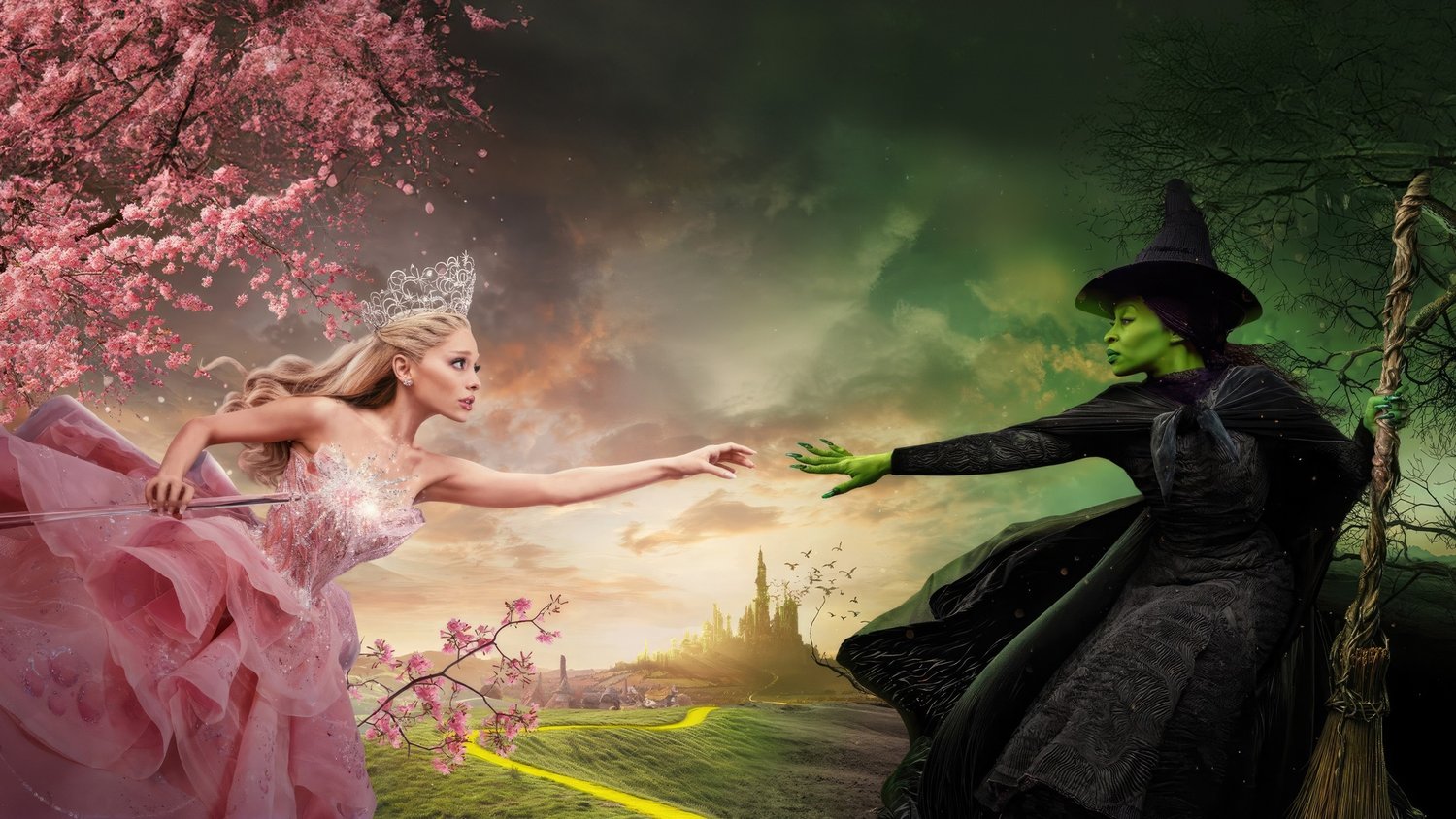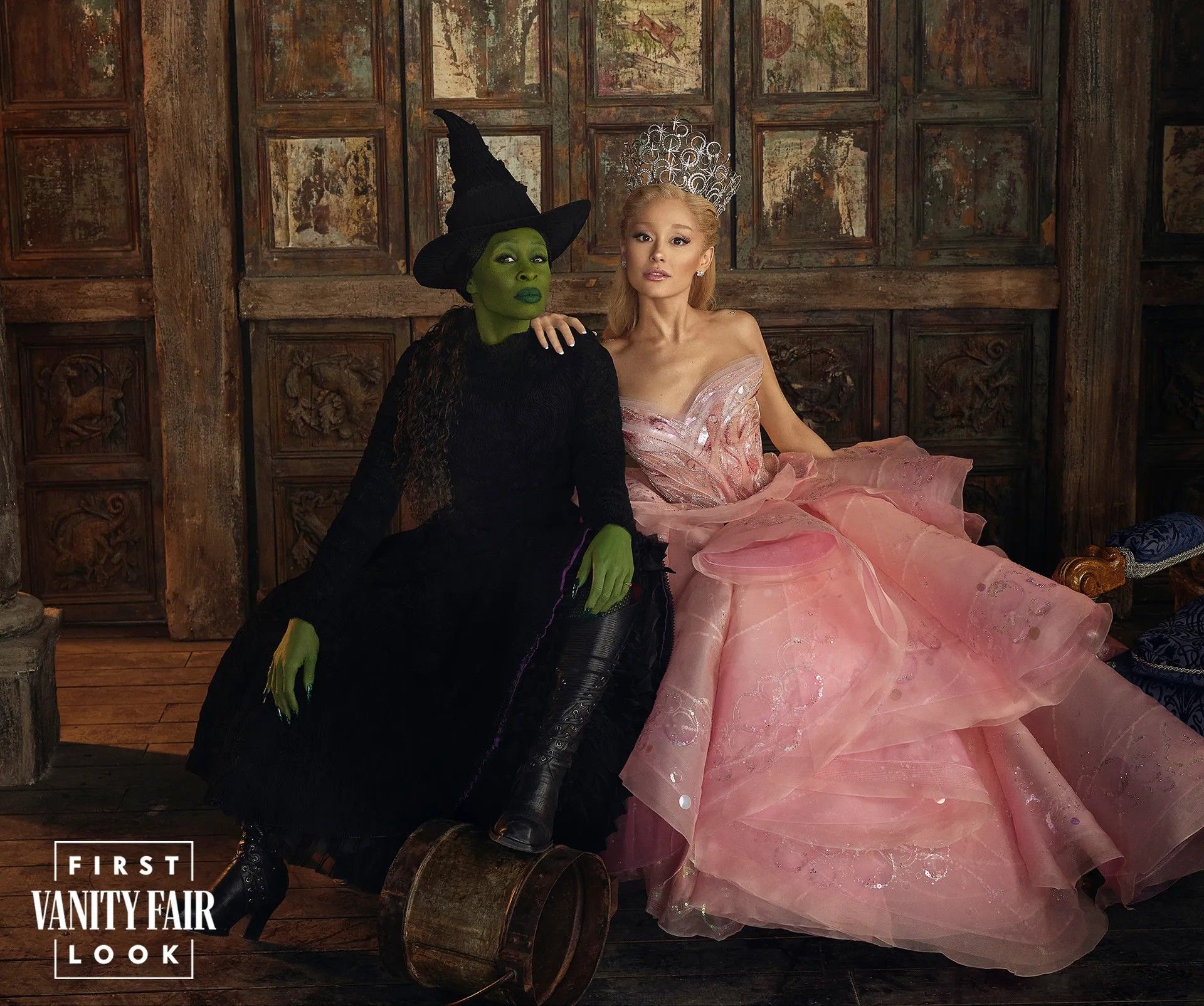There's a certain kind of magic that just sticks with you, isn't there? Like a favorite song or a story that truly gets under your skin. For many, that feeling comes from the world of "Wicked," a tale that, quite frankly, has captured hearts for quite some time now. It’s a story that keeps on giving, so to speak, drawing people into its unique take on a classic. You know, it's pretty remarkable how some narratives just manage to stay relevant and beloved through the years.
This particular narrative, with its green-skinned heroine and her journey, has, in a way, really stretched its legs across different forms of storytelling. From its beginnings on the page to its grand presence on the stage, it shows how a good yarn can truly find a home in various places. The way it has resonated with so many people, over what feels like a very considerable period, speaks volumes about its core appeal. It’s a testament, almost, to the power of reimagining what we thought we knew.
So, as we consider this story's long and impactful presence, it's worth taking a closer look at the different facets that make "Wicked" such a memorable experience. We'll explore some of the specific elements that give this tale its unique flavor, touching on the characters, the creative choices, and the moments that have made it such a long-standing favorite. It's about seeing what has kept this story moving forward, you know, through its own kind of running time in the public imagination.
- Barbara Bach Sister
- Chatgpt Subscription Price Iran
- Danica Mckellar Kids
- Httpscreaterobloxcomdashboardcreations
- John D Witherspoon
Table of Contents
- Who Gave Life to Wicked's Story?
- What Makes the Wicked Running Time So Captivating?
- How Did Wicked's Characters Get Their Names?
- What Happens to Elphaba and Fiyero in the Wicked Running Time?
- The Dance of Wicked Running Time - What Styles Are Featured?
- Who Becomes Glinda's Partner in the Wicked Running Time?
- The Enduring Tale - How Does Wicked's Story Conclude for the Witch?
- The Slippers and Their Significance in Wicked's Story.
Who Gave Life to Wicked's Story?
The whole narrative of "Wicked" really got its start with Gregory Maguire. He's the writer who put pen to paper, so to speak, and brought this fresh perspective to a well-known tale. It was in his book that we first met these reimagined figures, given new identities and backstories that truly reshaped our ideas about Oz. You know, it's pretty neat how one person's vision can just utterly transform something so familiar.
Maguire's initial book, which is simply titled "Wicked," acts as the foundation for everything that came after. It's the first installment in a series, laying out the groundwork for the expansive world and the detailed lives of these characters. The full title of that foundational work, "Wicked: The Life and Times of the Wicked Witch of the West," gives you a pretty good idea of its focus. It’s, in a way, a deep dive into what made this particular witch who she was, rather than just seeing her as a one-dimensional villain.
So, it's important to remember that before it was a hit on the stage, the intricate story and its characters were first brought to life through the pages of Maguire's writing. This original literary work provided the rich material that would later be adapted and enjoyed by a much wider audience. It's almost like the book set the stage, literally, for its theatrical counterpart, giving it a very solid and thoughtful base to build upon.
- Buy Chatgpt Plus Subscription Iran
- Marjorie Bach Walsh
- George Reeves Related To Christopher Reeves
- Pathivara Temple Trekking Information
- Teach Me First Honey Toon Free
What Makes the Wicked Running Time So Captivating?
There's something truly compelling about "Wicked," whether you're experiencing it as a book or watching it unfold on a stage. Both versions, actually, share a common thread of intense human feeling and difficult situations. They both really lean into the dramatic side of things, pulling you into the lives of these characters as they face various challenges and make big choices. It’s the kind of story that, in some respects, keeps you on the edge of your seat, wondering what will happen next.
A big part of what draws people in is the relationship between the two main characters, Elphaba, who becomes the Wicked Witch of the West, and Glinda, or Galinda as she's sometimes known, the Good Witch of the North. Their initial encounter, which takes place at Shiz University where they share living quarters, is a pivotal moment. This meeting sets the stage for a connection that, like your own friendships, is both complicated and deeply significant throughout the story's considerable running time. It’s a friendship that truly shapes much of what occurs.
The way these two figures, from such different backgrounds and with such different outlooks, come together and influence each other's paths is, honestly, a core reason for the story's enduring appeal. It's not just about good versus evil; it's about friendship, misunderstanding, and the choices we make. This deep emotional core, you know, is what helps the tale maintain its hold on audiences and readers, pretty much keeping it relevant for a very long period.
How Did Wicked's Characters Get Their Names?
One of the interesting things about Gregory Maguire's book is how he chose to name some of the figures we thought we knew. For instance, he gives the Wicked Witch of the West a personal name: Elphaba. This name, as a matter of fact, has a rather clever origin, coming from the initial letters of L. Frank Baum, the writer who first created the Land of Oz. It's a nice nod, isn't it, to the original storyteller, making the character feel both new and connected to her roots.
Similarly, Maguire also assigns a name to the Wicked Witch of the East, calling her Nessarose. This decision to give these iconic, but previously unnamed, figures their own distinct identities helps to flesh them out, making them feel more like actual individuals with their own stories. It’s a way of giving them more depth, so to speak, beyond just their titles. This attention to detail, you know, really contributes to the richness of the story's long running time.
What Happens to Elphaba and Fiyero in the Wicked Running Time?
In the stage adaptation of "Wicked," there's a moment that seems to suggest a final end for both Elphaba and Fiyero. However, things are not quite as they appear. It's a bit of a dramatic twist, really, designed to keep the audience guessing about their true fates. This kind of narrative surprise is, in a way, part of what makes the story so engaging and helps it stick with people over its long performance life.
Specifically, Fiyero's situation takes a truly unexpected turn. He doesn't actually perish; instead, he undergoes a transformation. He becomes a scarecrow, which, as it turns out, allows him to survive the harsh treatment from the Wizard of Oz's guards. This change is, honestly, a pretty clever way for the story to ensure his continuation, adding another layer to the narrative's twists and turns during the wicked running time of the show.
So, while it might look like a tragic conclusion for these two, the musical version offers a more nuanced outcome, especially for Fiyero. It shows how the story plays with expectations, providing moments of apparent loss that are then revealed to be something quite different. This element of surprise is, you know, a key ingredient in keeping the audience invested in the characters' journeys.
The Dance of Wicked Running Time - What Styles Are Featured?
The visual spectacle of the "Wicked" musical owes a lot to the various movement styles incorporated into its performances. It's not just one kind of dance; rather, it’s a mix of different forms that give the show its dynamic feel. You'll see elements of modern dance, which is known for its expressive and free-flowing movements, alongside the more structured elegance of ballroom and the precise beauty of ballet. It's, like, a real blend of different artistic expressions.
Beyond these, acrobatics also plays a pretty big part in the show's overall presentation. These athletic and often gravity-defying feats add a sense of wonder and excitement to the stage. When you think about the movements of the flying monkeys, for example, it’s actually a combination of modern dance techniques and acrobatic skills that bring those characters to life. This blend of styles, in a way, really enhances the visual storytelling throughout the wicked running time of the production.
The way these different dance and movement forms are woven together helps to create a rich and varied experience for the audience. It’s not just about the songs and the dialogue; the physical expression on stage is also a crucial component of the storytelling. This careful integration of movement is, you know, part of what makes the musical so visually captivating and helps it stand out in its genre.
Who Becomes Glinda's Partner in the Wicked Running Time?
In the narrative of "Wicked," we see Glinda eventually settle down and take a husband. The person who steps into this role is Sir Chuffery. He's not just any individual; he's depicted as an older gentleman, someone who has, you know, accumulated a good deal of wealth and holds a respectable standing within the community. His presence in Glinda's life is a notable development within the story's progression.
This pairing suggests a certain kind of arrangement, where status and financial stability are considerations. It paints a picture of Glinda's journey and the choices she makes as her life unfolds within the broader context of Oz. The introduction of Sir Chuffery, in a way, adds another layer to her character's path, showing how her personal life evolves during the wicked running time of the narrative.
The Enduring Tale - How Does Wicked's Story Conclude for the Witch?
The classic image of the Wicked Witch of the West's demise is, for many, deeply ingrained in popular culture. According to the original book from 1900 and the film version from 1939, her end comes quite dramatically. When Dorothy Gale, the young girl from Kansas, throws a container of water over her, the witch simply dissolves into nothingness. It’s a very memorable and somewhat abrupt conclusion to her story, you know, leaving a lasting impression.
This moment is, pretty much, the definitive way her story ends in those earlier tellings. It's a stark and clear resolution, symbolizing the triumph of good over what was perceived as pure evil. The simplicity of the act, just a bucket of water, makes the outcome even more striking and, in a way, quite unforgettable for anyone who encounters the tale.
The Slippers and Their Significance in Wicked's Story.
A central point of contention and desire in the story revolves around a particular pair of shoes. The Wicked Witch of the West, known as Elphaba, had a strong wish to possess the slippers that had previously belonged to the Wicked Witch of the East. These items are, quite frankly, very important objects within the narrative, holding a lot of power and meaning.
The reason these slippers became available, and why they were so coveted, is tied to a rather unfortunate event. Dorothy's house, as it happens, landed directly on the Wicked Witch of the East, bringing about her demise. This incident not only cleared the way for the slippers to change hands but also set in motion many of the key events that follow in the story, shaping its wicked running time. It’s, like, the catalyst for so much of the action.
- How To Subscribe To Chatgpt Plus In Iran
- Karen Fisher Age
- How Many Blimps In World
- Chatgpt Plus Subscription Iran Payment
- Buy Chatgpt Plus Subscription Iran


/prod01/channel_8/media/marketing-media/blog-imagery/wicked-movie-poster-3840X2160-18391-CREDIT-UNIVERSAL-PICTURES.jpeg)
